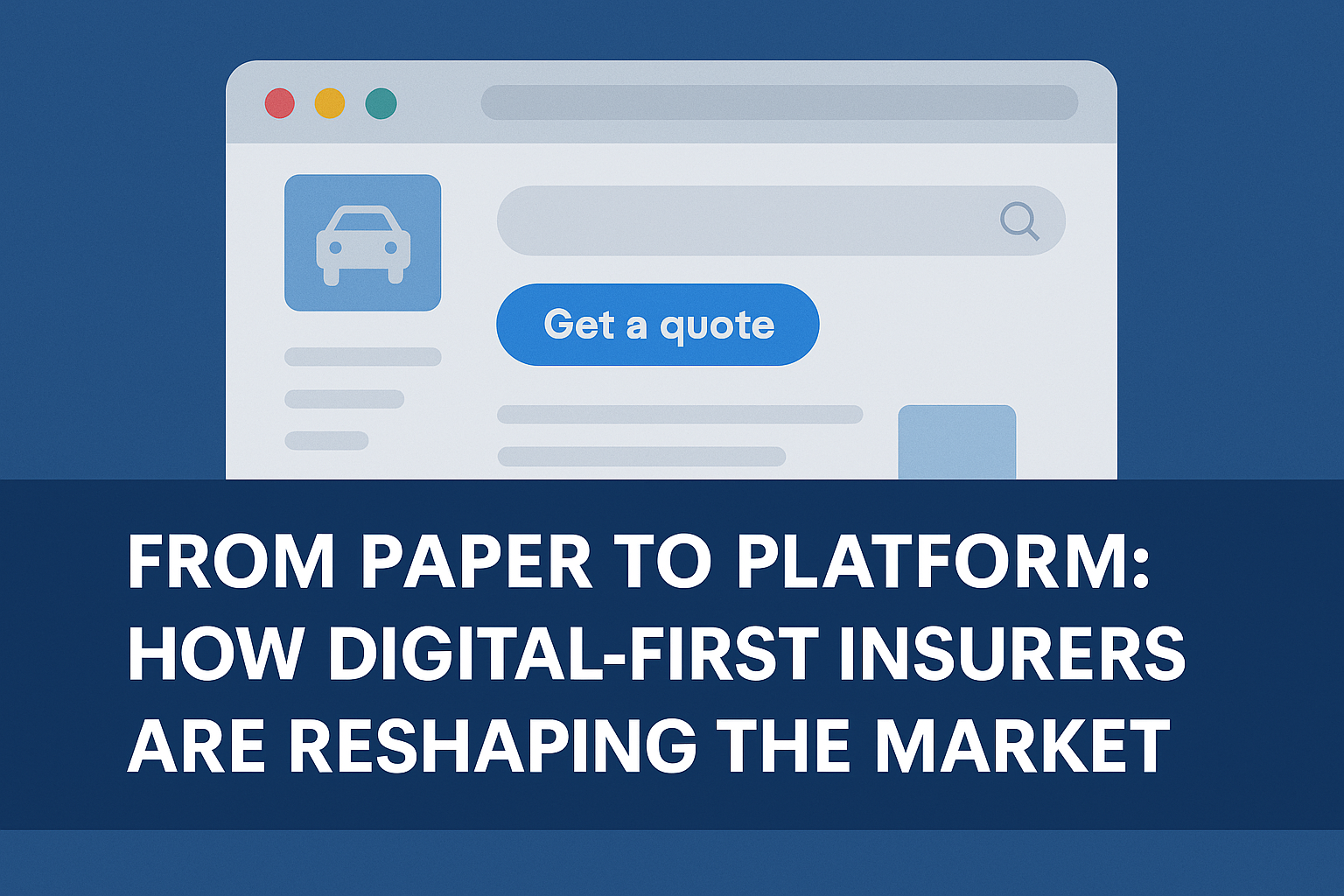
In 2025, the auto insurance industry is undergoing a radical transformation—and it’s happening on your smartphone. The rise of digital-first insurers is disrupting a sector once known for paperwork, call centers, and complicated fine print.
Driven by data, automation, and seamless user experiences, these tech-powered insurance providers are reimagining what coverage looks like—and how fast it can be delivered.
⸻
1. What Are Digital-First Insurers?
Digital-first insurers are companies that operate primarily or entirely online, using apps, AI, and automation to offer faster, more flexible insurance products. They ditch the legacy systems and office overhead of traditional insurers in favor of:
• Real-time quotes and approvals
• App-based claims filing
• Usage-based or behavior-driven pricing
• Transparent dashboards for customers to control and manage their policy
Think of them as the Spotify of insurance—simple, personalized, and digital from end to end.
⸻
2. Who’s Leading the Shift?
Several innovative companies are making waves:
• Root Insurance and Metromile pioneered usage-based auto policies with smartphone tracking.
• Lemonade uses AI bots to approve claims in under 3 minutes.
• Next Insurance and Zego are catering to gig drivers and freelancers with on-demand auto policies.
Legacy carriers like Progressive, GEICO, and State Farm are investing heavily in digital transformation to keep pace, launching their own mobile-first platforms and AI tools.
⸻
3. Why Consumers Are Switching
In a world of instant food delivery and one-click banking, drivers now expect the same from their insurers. Digital-first providers deliver on that expectation by offering:
• Faster service: No phone queues or paperwork
• Lower rates: Less overhead, more efficiency
• Personalized pricing: Based on how you drive—not just your ZIP code
• Better UX: Easy-to-use apps with real-time support
A recent McKinsey study found that 61% of Gen Z and Millennials prefer managing insurance digitally—and they’re driving this shift in market demand.
⸻
4. AI, Telematics & Automation Are the Engines
Behind the scenes, it’s all powered by smart tech:
• AI handles claims processing, fraud detection, and chatbot assistance.
• Telematics tracks mileage, speed, braking, and location.
• APIs connect insurers with repair shops, banks, and DMV databases in real time.
This makes for faster claims, fairer pricing, and more accurate risk assessments—a win for both customers and companies.
⸻
5. What This Means for the Future
Digital-first insurance isn’t just a convenience—it’s fast becoming the standard. As legacy insurers modernize and startups scale, the market is consolidating around a few key themes:
• Mobile-first everything
• Real-time personalization
• Data-driven efficiency
Traditional agents and paper policies won’t disappear overnight, but in 2025, they’re quickly becoming relics of the past.
⸻
Final Thoughts: The Future Is Clickable
The auto insurance industry is being reshaped from the ground up—by code, not clipboards. Digital-first insurers are proving that when technology meets transparency, insurance becomes smarter, cheaper, and faster.
For drivers, this means more control. For insurers, it’s a race to digitize or be left behind.